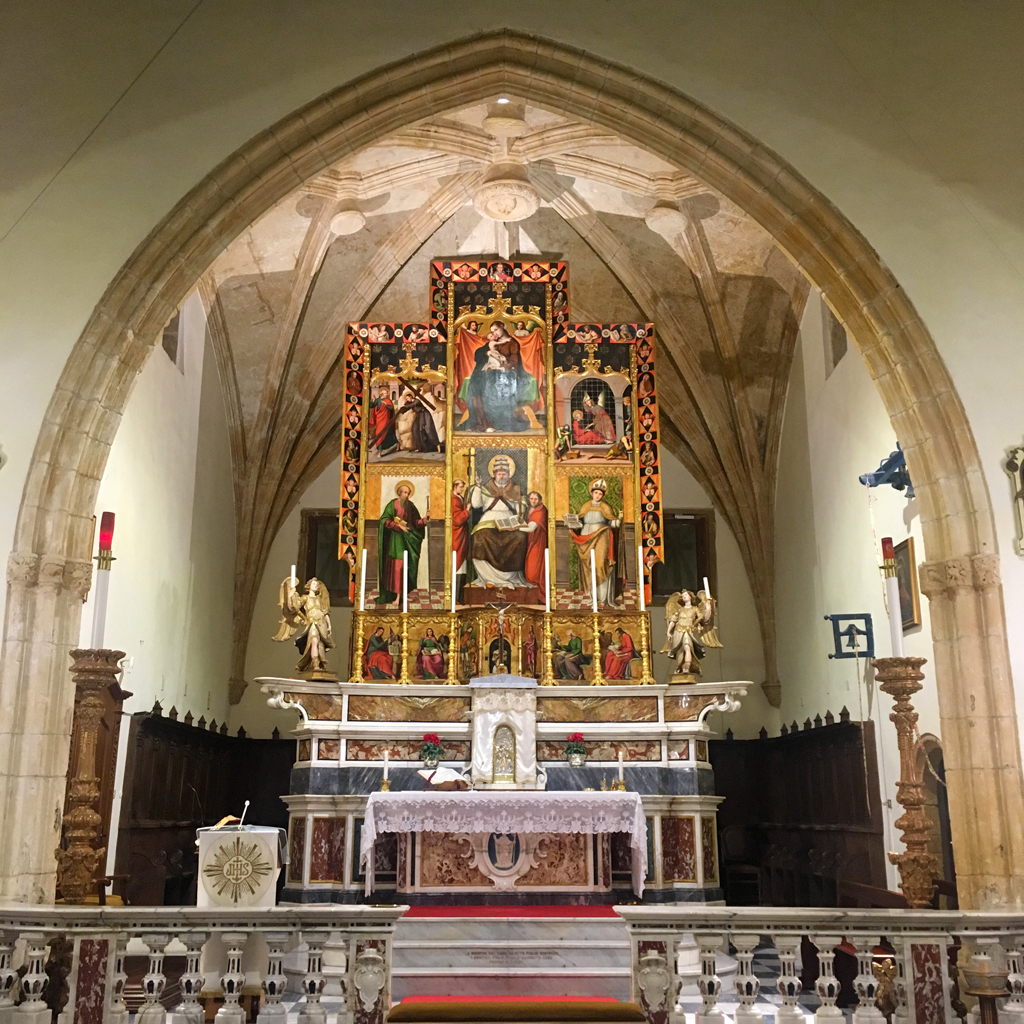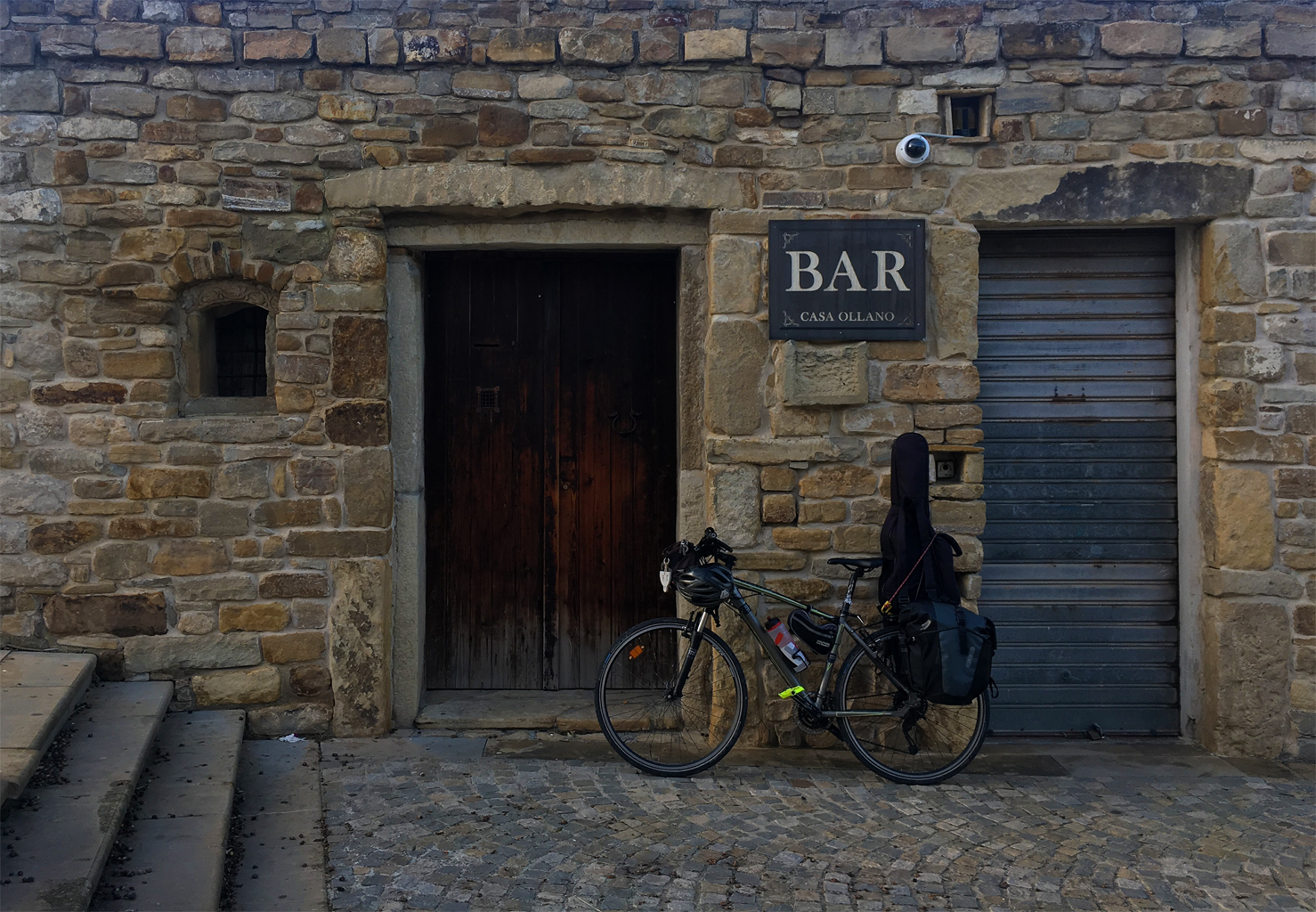
347/377: Suelli
INSPIRATION

A very short ride takes me from Senorbì to Suelli, where the Mayor Massimiliano awaits me in the Town Hall. I arrived in a small village in the Trexenta of considerable importance because it was a bishopric in the Middle Ages.
Massimiliano leaves me with the municipal workers Marzio and Andrea who take me to visit the area surrounding the village with the municipality’s four-seater quod!
We proceed out of the village, darting through the golden fields that begin and green in the Trexenta, the granary of Rome, while my beard and hair are ironed by the wind and by the speed of the open quod.

We arrive at the Nuraghe Piscu. Whenever I think I have already seen the most impressive nuraghe we have in Sardinia, I have to think again: the opening that leads to the main tower of this nuraghe is one of the most majestic and well preserved I have ever seen! And all around a series of remains suggests an entire village below, yet to be excavated!
We continue the race in quod through the hills, arriving at the water source of San Giorgio, the first bishop of Suelli around the year one thousand, born in Cagliari and who contributed to the spiritual rebirth of these territories. The source was covered by a chapel in honour of the saint and Marzio shows me what should be the footprint of the saint’s horse who discovered the presence of water.

The whole territory is scattered with archaeological remains, nuraghi, but also pre-Nuragic tombs, such as the hypogean ones of Pranu Siara. We stop to observe the slope on which the burials are found, lined up for a hundred meters, in which many human bones have been found that are currently being analysed in a physical anthropology laboratory.

Back in the village and parked the quod in the municipal garage, we take a walk through the historic centre, whose houses are built with the classic light marl stone of the area. Casa Ruda is a beautiful example of a Campidanese manor house with a beautiful courtyard transformed into a museum house.

But the real attraction of the town is its square which contains three churches and the sanctuary dedicated to San Giorgio. The parish church of San Pietro, once the cathedral of the diocese, is the most impressive of all, with a five-arched stone facade and high bell tower. Inside is the beautiful retable of San Pietro, the work of the Cavaro workshop in Cagliari.

From the sacristy of the parish church you enter the adjacent building, the Sanctuary of San Giorgio, the place where the saint is thought to have been buried. Here, too, there is a beautiful wooden retable and the statue of the saint, while beyond a sixteenth-century gate a niche contains the relics of the saint and in the back of the room there is another retable. Our feet walk on a beautiful 17th century azulejos floor.
From the sanctuary we reach the square and in front of us is the former church of Sant’Antonio, now deconsecrated, inside which the preparation of the crib has already begun and where the chariot carrying the saints in procession is located.
The third church is that of Nostra Signora del Carmine, with a single nave and a beautiful wooden altar inside. As if this square wasn’t rich enough like this, in its center there is the opening of an ancient ceramic cistern, below street level, from which twelve channels that supplied the town with water, now disappeared, once branched off.

After a hearty lunch in Senorbì (it is already the third time I have been here in a few days!) we visit the elementary school, where the children welcome me like a rock star, while in the late evening we return to the Town Hall where Marzio resumes the quod. He absolutely wants to accompany me to the mountains. So I cover myself well, the air is starting to get fresh, and we’re off again through the countryside.
We cross a green reforestation area and arrive at Murdegu in Tres Bias. Here we go a bit into the vegetation and go up to the remains of a nuraghe. We are high up, the sun has already set behind the horizon and it’s cool but the view from here is amazing.

After a long descent, hit by the now freezing air, Marzio takes me to the church of San Cosimo and Damiano, inside a beautiful park full of millenary olive trees, with trunks of a thousand shapes and windings. Under the church, once the parish church of the now disappeared village of Cixi, there seem to be the remains of another nuraghe.
It was a very long day and full of interest. As a worthy conclusion, Marzio takes me to see the rehearsal rooms where the young people of the country dream of becoming rock stars!
SOUND FRAGMENTS

SARDINIAN SHORT STORIES

Among the various spiritual paths of Sardinia we also find the San Giorgio Way, which retraces the places where the bishop was born, lived and worked on several missions.
The Way of St. George is the result of research and field work carried out since 2007 by Franco Saba, former director of the Forestry Corps of the Autonomous Region of Sardinia, co-founder of Legambiente in Sardinia and a member of the voluntary organisation “Iubilantes” of Como , which contributed to the success of the initiative.
Its path is divided into several sections. From Cagliari, the birthplace of the saint, you can reach Suelli through the Parteolla and Trexenta. From here you can then continue in two directions, either towards San Vito crossing the Gerrei, or towards Ogliastra. Here too, once you arrive in Gairo Taquisara, you can proceed in two directions, either towards the coastal Ogliastra or towards the Nuorese with the final destination of Oliena.
The path therefore crosses landscapes of all types, and in addition to being spiritual it also becomes an opportunity to get to know the area, meet communities and share experiences. It really makes me wonder why that there is a need, for those who want to make a spiritual journey, to go to Spain to do the Camino de Santiago!